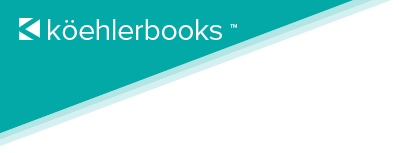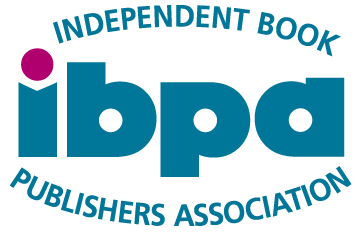(UPDATED BY IBPA 9-1-22)
A hybrid publisher must:
- Define a mission and vision for its publishing program.
- Vet submissions.
- Commit to truth and transparency in business practices.
- Provide a negotiable easy-to-understand contract for each book published.
- Publish under its own imprint(s) and ISBNs.
- Publish to industry standards.
- Ensure editorial, design, and production quality.
- Pursue and manage a range of publishing rights.
- Provide distribution services.
- Demonstrate respectable sales.
- Pay authors a higher-than-standard royalty.
(See complete list details below)
______________________________________________
The book publishing world has undergone seismic changes over the past two decades, triggered largely by new technologies that have democratized book production, printing and distribution. No longer do a handful of New York publishing juggernauts with printing presses dictate who gets published and when. Hundreds of independent publishers now populate the book publishing universe.
With this flood of arrivals comes opportunity and risk. The opportunity for authors is to team with ethical and able independent publishers who subscribe to the vaunted professional standards practiced by the most respected major publishing houses. The risks for authors is the possibility of signing with an unethical publisher that produces shoddy work and charges outrageous fees. Unfortunately, there are more than a few incompetents posing as professional editors or publishers. Anyone can call themselves an editor or publisher. The litmus test is the track record of work they produce and their fairness to authors.
The non-profit Independent Book Publishers Association (IBPA) was formed to infuse our industry with integrity and professionalism. It is why our company, Koehler Books, remains a proud member of IBPA. We have, since our inception, subscribed to maintaining the highest professional standards in terms of the quality of our work and absolute transparency in our business dealings. Like IBPA, we advocate for authors, and to that end we produced a Pocket Guide to Publishing to assist them with navigating the often intimidating book-publishing process. Our Pocket Guide can be downloaded for free from our website. Our distributor, IngramSpark, also makes the guide available to its self-publishing clients, and last year we were awarded the Best Practices in Indie Publishing award as part of the IngramSpark Ignite Awards.
Recently, IBPA sent to its 3,000 members a manifesto on responsible hybrid/independent publishing. (At Koehler Books we call it “co-publishing.”) My business partner, Publisher John Koehler, and I read IBPA’s document and reacted with delight. The trade association has eloquently codified business practices we strive to achieve. The document provides authors a checklist of what to look for in a publisher like Koehler Books, who combines traditional and fee-based publishing.
IBPA Chief Executive Angela Bole told us in an email that the document, called Hybrid Publishing Criteria, took many months and many conversations to develop. Part of IBPA’s intent, Angela said, is to help authors identify “reputable” hybrid publishers and distinguish them from general service providers who help writers self-publish. We do both at Koehler Books, as well as traditional publishing, and are absolutely transparent about our two business models.
Below is IBPA’s guide. We endorse it wholeheartedly and remain a proud member of IBPA.
Respectfully,
Joe Coccaro, Executive Editor, Koehler Books
Independent Book Publishers Association’s (IBPA’s)
Hybrid Publisher Criteria
(Published 02/20/2018)
Hybrid publishing companies behave just like traditional publishing companies in all respects, except that they publish books using an author-subsidized business model, as opposed to financing all costs themselves, and in exchange return a higher-than- industry-standard share of sales proceeds to the author. In other words, a hybrid publisher makes income from a combination of publishing services and book sales.
Although hybrid publishing companies are author-subsidized, they are different from other author-subsidized models in that hybrid publishers adhere to the following set of professional publishing criteria. See additional considerations below for more information about how hybrid publishers differ from other author-subsidized models.
A hybrid publisher must:
- Define a mission and vision for its publishing program. A hybrid publisher has a publishing mission and a vision. In a traditional publishing company, the published work often reflects the interests and values of its publisher, whether that’s a passion for poetry or a specialization in business books. Good hybrid publishers are no different.
- Vet submissions. A hybrid publisher vets submissions, publishing only those titles that meet the mission and vision of the company, as well as a defined quality level set by the publisher. Good hybrid publishers don’t publish everything that comes over the transom and often decline to publish.
- Commit to truth and transparency in business practices. It should go without saying, but like any reputable business, a hybrid publisher must commit to transparency in its business practices. This includes being clear about the cost of services and providing an honest estimation of each book’s potential for success. A hybrid publisher is also fair and transparent in its financial dealings, writes contracts in understandable language, and resolves any disputes promptly and fairly. A hybrid publisher never misleads potential authors with false promises, inflated sales data, or manipulated reviews.
- Provide a negotiable, easy-to-understand contract for each book published. A hybrid publisher supplies a clear, negotiable contract at the start of every negotiation which sets out—in understandable language—the exact scope of the arrangement, including term limits and compensation. All contracts should include regular reviews and updates as needed. A clear rights-reversion clause must be included in every contract. A hybrid publisher should be clear that it welcomes potential authors to discuss the proposed contract with neutral third-party advisors, such as a legal advisor or authors guild.
- Publish under its own imprint(s) and ISBNs. A hybrid publisher is a true publishing house, with either a publisher or a publishing team developing and distributing books using the hybrid publisher’s own imprint(s) and ISBNs.
- Publish to industry standards. A hybrid publisher accepts full responsibility for the quality of the titles it publishes. Books released by a hybrid publisher should be on par with traditionally published books in terms of adherence to industry standards, which are detailed in IBPA’s Industry Standards Checklist for a Professionally Published Book.
- Ensure editorial, design, and production quality. A hybrid publisher is responsible for producing books edited, designed, and produced to a professional degree. This includes assigning editors for developmental editing, copyediting, and proofreading, as needed, together with following traditional standards for a professionally designed book. All editors and designers must be publisher approved; they can be part of the publisher’s internal staff or outsourced, or a mix of both options.
- Pursue and manage a range of publishing rights. A hybrid publisher normally publishes in both print and digital formats, as appropriate, and perhaps pursues other rights, in order to reach the widest possible readership. As with a traditional publisher, authors may negotiate to keep their subsidiary rights, such as foreign language, audio, and other derivative rights.
- Provide distribution services. A hybrid publisher has a strategic approach to making books available to consumers beyond the simple mechanism of uploading files to online retailers and making books available for purchase online. Depending on the hybrid publisher, this may mean partnering with a traditional distributor that has a team of sales representatives who actively market and sell books to retailers, libraries, wholesalers, etc., or it may mean publisher outreach to a network of specialty retailers, clubs, or other niche-interest organizations. At minimum, a hybrid publisher has a marketing and sales strategy for each book it publishes, inclusive of appropriate sales channels for that book, and provides assistance and/or education to the author seeking to execute or understand this strategy in order to get his or her book in front of its target audience. This is in addition to listing books with at least one industry-recognized wholesaler.
- Demonstrate respectable sales. A hybrid publisher should have a record of producing several books that sell in respectable quantities for the book’s niche with a demonstrated sales track record with like titles. This varies from niche to niche; small niches, such as poetry and literary fiction, may see sales of less than a couple thousand copies, while mass-market books require more.
- Pay authors a higher-than-standard royalty. When compensation is based on royalties, a hybrid publisher pays its authors more than the industry-standard* royalty range** on print and digital books in exchange for the author’s personal investment. Although royalties are generally negotiable, the author’s share must be laid out transparently and must be commensurate with the author’s investment. In most cases, the author’s royalty should be greater than 50% of net on both print and digital books.
Additional considerations:
- The criteria above point to functions that a reputable hybrid publisher is expected to perform. It’s up to each hybrid publisher to figure out, and to explain, how it performs each function. It is not sufficient for a hybrid publisher to say they adhere to most, but not all, of the criteria and still call itself a hybrid publisher. In cases where an organization does not meet all criteria, the organization must classify itself a self-publishing service provider. In a self-publishing service provider/author relationship, it is the author who plays the publisher role and the company that provides the publishing services.
- Regardless of who pays for editorial, design, and production fees, it is always the publisher that bears responsibility for producing, distributing, and ultimately selling professional-quality books.
- An author-subsidized business model in no way relieves a publisher of its editorial, design, marketing, sales, and distribution responsibilities.
- In comparing hybrid publishers with vanity presses, it’s important to note that vanity presses are not selective in what they publish, nor are they set up to be. Therefore, it is better to think of vanity presses as self-publishing service providers, not publishers. Again, in a self-publishing service provider/author relationship, it is the author who plays the publisher role and the company that provides the publishing services.
- An author may be asked to subsidize or pay the full cost of his or her print runs. Authors who do so should own those physical copies outright, having paid the manufacturing fees, and should not be required to pay a “percent-off list price” amount arbitrated by the publisher when they need to order copies.
* “Standard” royalties in traditional publishing were once calculated based on the list price or suggested retail price of the work. Nowadays, and especially among small presses and independent publishers, it is more common to calculate royalties based on net revenues.
Some contracts offer an escalated royalty based on the number of copies sold, e.g., 8% of net receipts on the first 5,000 copies, 10% on the next 5,000 copies, and 12% on all copies in excess of 10,000. The actual royalty percentages and break points vary from publisher to publisher and are often subject to negotiation with the author.
Trade publishing contracts, and especially the contracts larger publishers use, often set different royalty rates for various other formats, territories, terms of sale, and channels of distribution.
Standard royalty rates vary among traditional publishers. Although some publishers are outliers, standard royalty rates generally range from 5% at the lower end to 15% at the higher end. Some traditional publishers offer the same royalty rate for both printed books and e-books; most now offer up to 25% of net revenues for the sale of e-books. Many independent publishers adopt a flat royalty of 10% of net receipts for all formats. However, there is no longer a “standard” royalty rate among publishers.








